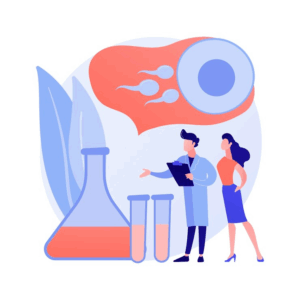
Is Prolistem Effective for Azoospermia? A Complete Fertility Guide
Introduction Is Prolistem effective for azoospermia? This question is vital for many men struggling with infertility due to azoospermia — a condition characterized by the

Azoospermia, the complete absence of sperm in the ejaculate, is a key yet often overlooked factor in male infertility. It affects about 1% of all men and 10–15% of infertile men. Understanding the causes behind this condition can pave the way for accurate diagnosis, effective treatment, and the possibility of fatherhood. In this article, we dive deep into the common causes of azoospermia and explore how this condition can be diagnosed, treated, and managed.
Azoospermia is identified during fertility assessments when no sperm is found in the semen. Despite this, many affected men can still father children with proper medical care.
There are two major types:
Uncovering the root cause of azoospermia is essential for crafting the right treatment strategy. It also helps determine whether the condition is reversible or if assisted reproductive methods are needed. Timely diagnosis can significantly improve the chances of conception.
Here’s a breakdown of the most common causes, categorized by type:
This type involves normal sperm production, but sperm are blocked from entering the ejaculate.
A genetic condition where men are born without the vas deferens—tubes responsible for carrying sperm. Many affected individuals have mutations linked to cystic fibrosis.
Past surgeries like vasectomies or unintended damage during procedures in the pelvic or groin region can block sperm pathways. Trauma to the testicles may also cause obstructions.
Infections such as STIs can cause inflammation or scarring in the reproductive tract, blocking sperm movement.
Blockage in the ejaculatory ducts can stop sperm from entering the urethra. This may be congenital or develop later in life, often detected via imaging tests.
This form results from the inability of the testicles to produce enough sperm.
Chromosomal disorders like Klinefelter syndrome or Y-chromosome microdeletions can interfere with sperm production. Genetic testing is crucial in these cases.
Sperm production relies on hormonal signals from the brain to the testes. Conditions like hypogonadotropic hypogonadism disrupt this pathway, reducing testosterone, FSH, and LH levels.
Exposure to chemicals, radiation, excessive heat, or habits like smoking, drug use, and poor diet can lower sperm production over time.
Azoospermia often presents without noticeable symptoms. However, signs may include:
A diagnosis of azoospermia can be emotionally tough. Support from partners, counseling, or connecting with others facing similar issues can be incredibly helpful. Exploring options like sperm donation or adoption may also provide new hope.
The common causes of azoospermia vary, but understanding them is crucial for finding the right path forward. From genetic to hormonal and lifestyle factors, pinpointing the cause opens doors to treatments and possible parenthood.
Advancements in medicine now allow many men with azoospermia to fulfill their dreams of becoming fathers. With accurate diagnosis, tailored treatments, and emotional support, navigating this challenge is possible.

Introduction Is Prolistem effective for azoospermia? This question is vital for many men struggling with infertility due to azoospermia — a condition characterized by the

Prolistem for non-obstructive azoospermia is gaining attention in the world of male fertility treatment. For men diagnosed with NOA—a condition where the body fails to
Prolistem, a patented formula, has not been evaluated by the Food and Drug Administration. This product is not intended to diagnose, treat, cure, or prevent any disease.
PROLISTEM® is a Patented Formula
Copyright © 2025 Prolistem®